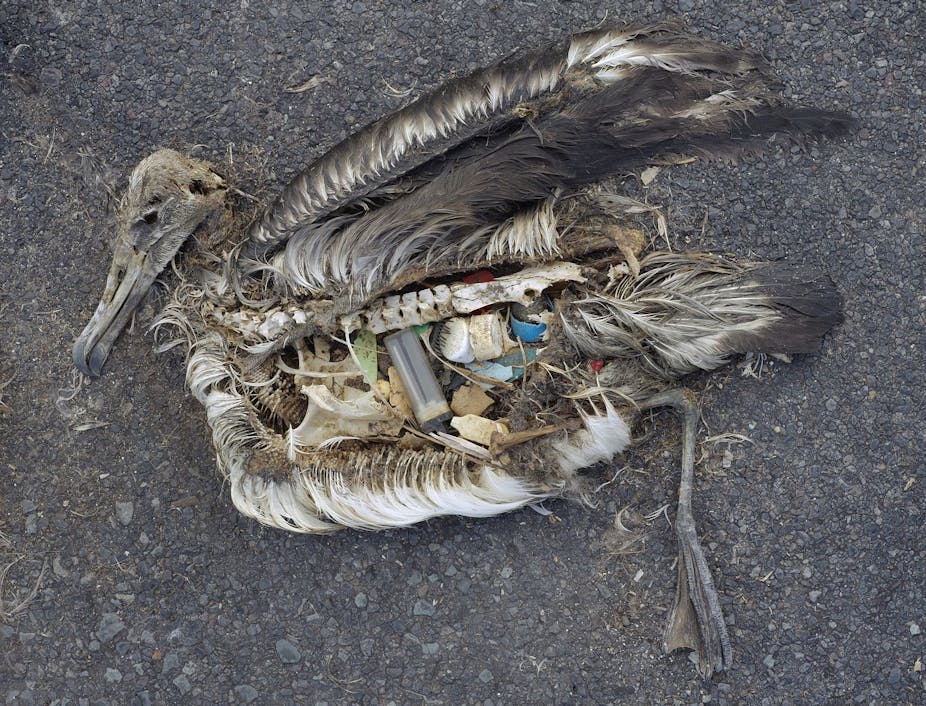The recent storms have transformed many of the nation’s coasts – blasting away the sand from beaches, eroding cliffs, and damaging properties. More surprising is the sudden and often dramatic appearance of huge amounts of plastic debris, dredged up from the deep and thrown onto the shore. Ranging from the banal to the curious, these fragments of modern life deposited at sea are a signature of a serious problem threatening our oceans.
Plastic litter is now almost everywhere in the world’s oceans, extending from the coast to far out to sea, and down through the water column to the ocean floor. Large pieces of plastic such as bottles, plastic bags, cigarette lighters and old toys can be found on most beaches and are readily spotted from the decks of ships at sea. And microplastic fragments smaller than 5 mm, and even smaller nanoscale plastic fragments less than 1mm in size, can be found in sand, sediment, and even the tissues of marine organisms.
An obvious cause of this global problem is increasing use of plastics, with annual production increasing from just 1.5m tonnes in the 1950s to a staggering 280m tonnes in 2011.
Despite the ubiquity of plastic in the ocean, our knowledge about the effects of this debris is limited. As if to underline the issue, a recent horizon scan of global conservation issues identified microplastics as a serious emerging global environmental threat.
Numerous organisations have drawn attention to the plastic litter issue, but the scale of the problem is not yet widely appreciated by either the public or politicians. And right on cue, research is beginning to show that plastic litter is affecting a number of marine animals including birds, turtles and invertebrates, with plastic fragments showing up in their guts, respiratory tracts and tissues.

Yet few, if any, practical measures have been put in place to manage the situation. Last year I was one of more than 100 scientists who met at the University of Siena in Italy to clarify what is known, and what still remains to be investigated, concerning this problem.
We discussed several important areas that need further investigation, including the need for answers to such questions as: how much plastic is getting into the marine environment each year, where is it coming from, and where do the different types of plastic litter accumulate? Is plastic taken up by marine organisms and is it damaging to them? What is the extent of economic, environmental and human health costs that result from the marine plastic litter?
Identifying questions like these allows us to focus our combined research efforts, and ensure we’re targeting the right areas with the limited funding that is available.
But science alone cannot solve the rising possibility of a future where beaches of plastic, rather than sand, are commonplace. We need public education programmes to increase awareness of the scale and severity of the problem. And we need guidelines and regulations to ensure that plastics are disposed of safely, not dumped at sea – and we need to ensure that these are enforced. Ultimately, we need to reduce our use of plastics worldwide and develop environmentally friendly alternatives.
There is clearly much to be done in order to bring this issue to the attention of the public and politicians. Fortunately, the European Commission and other organisations around the world have at last begun to support the research that will give us the answers to our questions. But as is the case with the many environmental problems of our time, it is undeniable that we need to take immediate action to limit plastic debris in the ocean.

